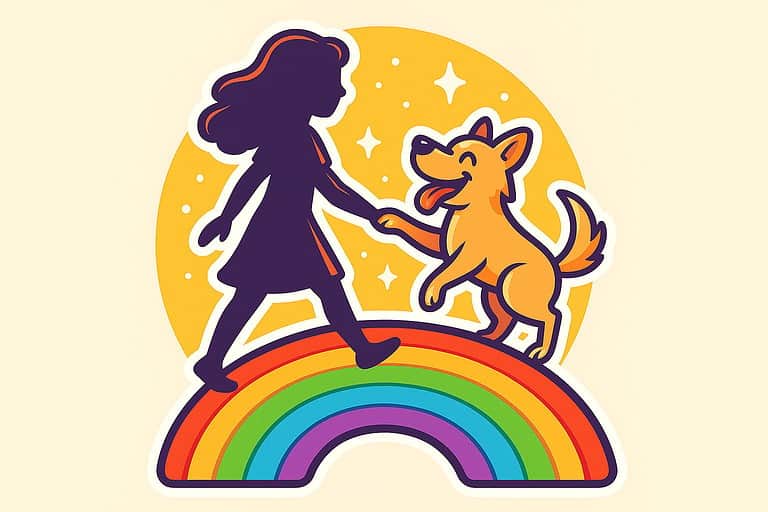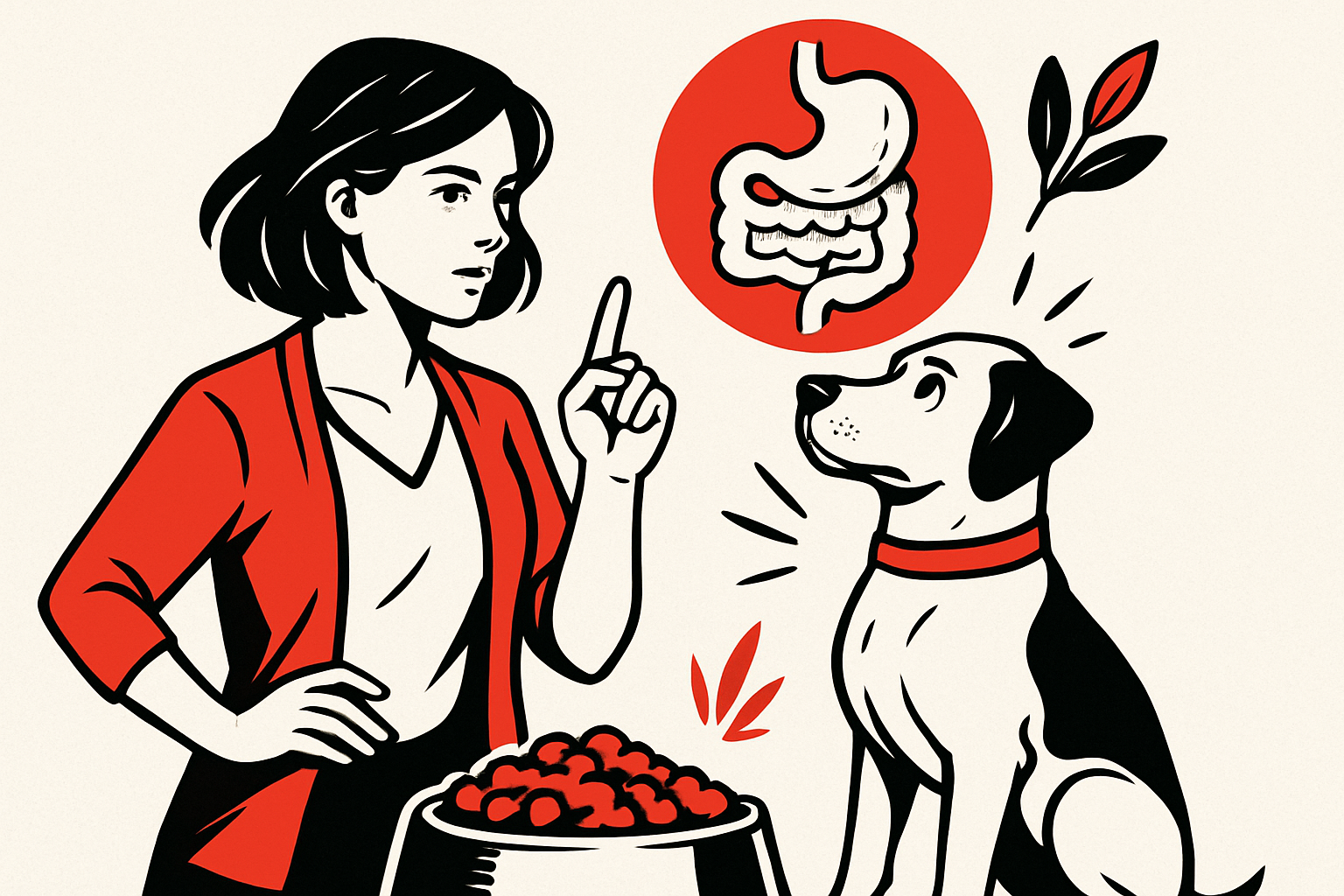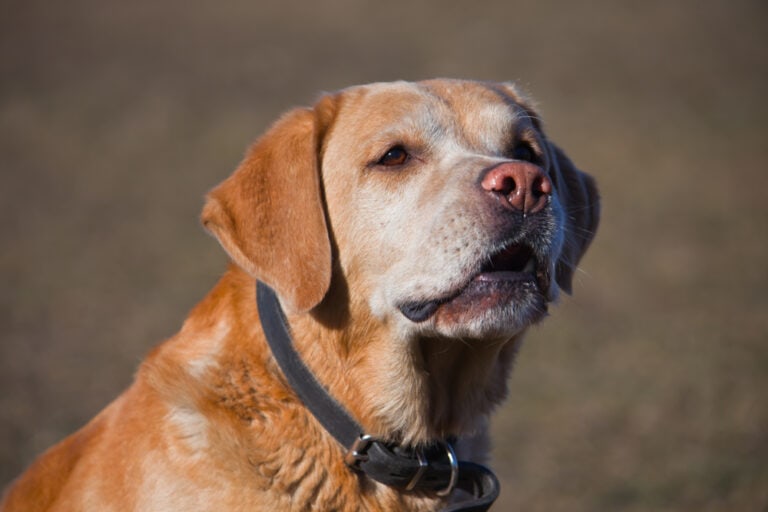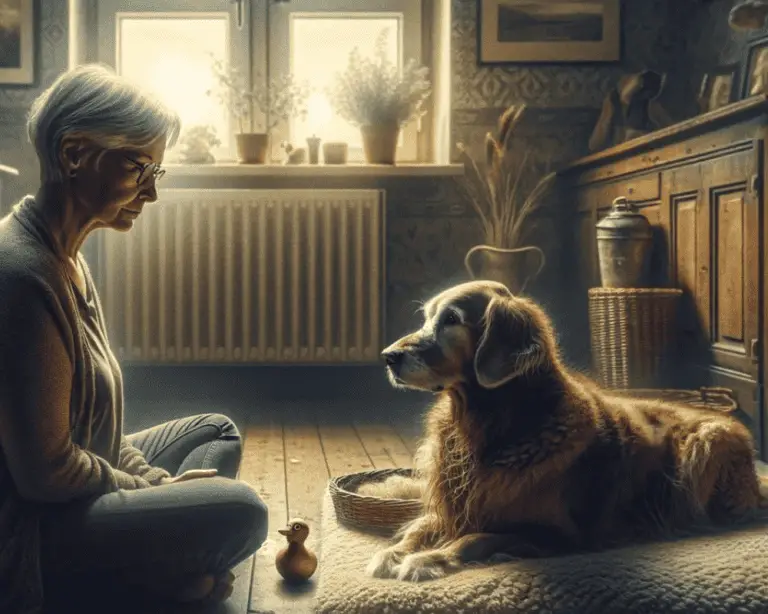My Old Dog Keeps Walking in Circles – Is That Dementia?
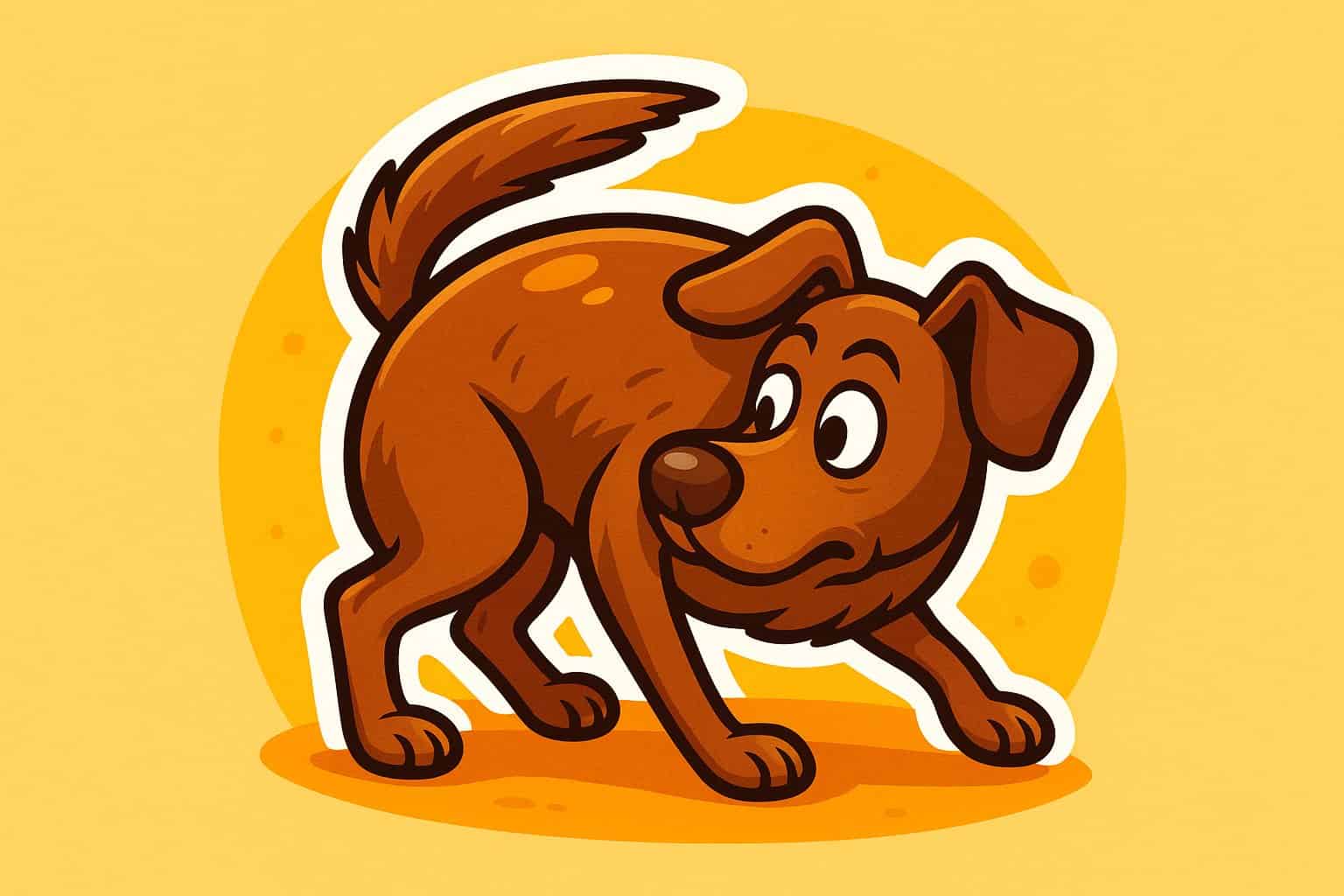
Seeing your senior dog walk in circles can be pretty alarming, especially if it seems to come out of nowhere. Yes, walking in circles can be a sign of canine dementia, also called canine cognitive dysfunction, but that’s not the only possible cause.
Your dog might have ear infections, pain, or other medical issues that mess with their balance and coordination. You’re definitely not the only one worrying about these changes in your furry friend.
Studies suggest up to 60% of dogs over 11 years old develop some form of cognitive decline. Circling behavior is one of the first things pet owners notice.
Knowing why this happens can help you care for your aging dog. Whether your dog’s circling is from dementia or something else, you’ve got options to support them.
Recognizing the difference between dementia and other health issues matters. You can learn how to adapt your routines and help your senior dog stay comfortable.
Why Is My Senior Dog Walking in Circles?
When your older dog starts walking in circles, something has changed in their body or mind. Causes range from simple ear infections to more serious brain conditions.
Knowing the difference between normal spinning and concerning behavior can help you act quickly. Sometimes, it’s nothing, but sometimes, it’s a red flag.
Common Causes Behind Circling in Older Dogs
Canine cognitive dysfunction (dog dementia) is one of the most common reasons your senior dog might walk in circles. Dogs, like people, can develop memory problems and confusion as they age.
Your dog might seem lost in familiar places. Some walk into corners and forget how to back out.
This condition affects up to 68% of dogs over 15 years old. Vestibular disease affects your dog’s inner ear and balance system.
When vestibular disease hits, your dog feels dizzy and off-balance, so they start circling. You might see your dog’s head tilt to one side, or their eyes dart back and forth.
Vestibular disease can come on suddenly and look scary, but many dogs bounce back. Ear infections can also cause circling.
Pain and pressure in the ear make your dog uncomfortable and mess with their balance. Look for head shaking, scratching at the ears, or a bad smell.
Your vet can usually treat ear infections with medication. Brain tumors or strokes are more serious causes.
These conditions put pressure on parts of the brain that handle movement and balance. Arthritis and joint pain can force your dog to move in circles because turning one way hurts less.
Neck or spine problems make this even more likely. It’s especially common in older dogs with stiff joints.
How to Spot Abnormal Circling vs. Playful Spinning
Normal spinning happens when your dog gets excited or happy. Maybe they spin before dinner or when you get home.
This spinning lasts just a few seconds. If you call their name, they stop and look alert.
Abnormal circling is different. Your dog seems confused or can’t stop the behavior.
They might circle for minutes, ignoring you the whole time. Watch for these warning signs:
- Circling always happens in the same direction
- Your dog seems lost or confused while circling
- They can’t stop when you call them
- The circling happens at random times
- Your dog looks tired but keeps circling anyway
Compulsive circling often happens in the same spot every time. Some dogs wear a path in the carpet or grass from walking the same circle over and over.
If your dog circles more than a few times in a row, or if it happens every day, something’s probably wrong.
When Circling Turns Into a Warning Sign
Call your vet right away if the circling starts suddenly. Quick changes in behavior usually mean your dog needs help.
Emergency signs include:
- Circling combined with vomiting or loss of appetite
- Falling over or acting drunk
- Trouble walking in a straight line
- One pupil looks bigger than the other
- Signs of pain
Gradual onset circling could be cognitive dysfunction or arthritis. It’s not an emergency, but you should still schedule a vet visit soon.
Keep a diary of when the circling happens. Note the time of day and how long it lasts.
This info helps your vet figure out what’s going on. Your dog’s age matters too.
Circling that starts after age 10 is more likely to be serious. Don’t wait and hope it goes away.
Early treatment usually works better and helps your dog feel more comfortable.
Canine Cognitive Dysfunction (CCD)
Canine cognitive dysfunction affects your dog’s memory, learning, and daily behavior as they age. You’ll notice changes in how your dog interacts with you and their surroundings.
Sometimes it starts with subtle confusion that gets more noticeable over time. It’s tough to watch, but it’s common.
What Is Dog Dementia?
Canine cognitive dysfunction is basically your dog’s version of Alzheimer’s disease. As dogs get older, their brains go through changes a lot like humans.
CCD mainly affects dogs over 9 years old. Brain cells start to break down, and it gets harder for your dog to process information.
Inside your dog’s brain, neurons break down. Protein plaques called beta-amyloid build up.
These plaques mess with normal brain communication. By age 16, about 68% of dogs show some signs of cognitive dysfunction.
If you’ve got an older dog, chances are they’ll experience some mental decline. Your dog isn’t being stubborn or difficult—their brain is changing.
Everyday tasks just get harder for them.
How Dementia Affects Your Dog’s Behavior
Does your dog seem like a different animal lately? CCD changes how your dog thinks, learns, and acts.
Memory problems are often the first thing you’ll notice. Your dog might forget where their food bowl is or not recognize familiar people.
They may even forget house training rules they’ve known forever. Learning gets tougher.
Commands that used to be easy suddenly seem confusing. New routines or changes in the house can stress them out more than before.
Sleep patterns often change a lot. Your dog might pace at night instead of sleeping.
During the day, they might seem tired or confused. Social behavior shifts too.
Some dogs get clingy and follow you everywhere. Others withdraw and don’t want to play or be part of family activities.
Early Signs of Cognitive Decline
Maybe your dog’s been acting a little “off” and you’re wondering if it’s just old age. Here are some early warning signs:
Disorientation shows up in a few ways. Your dog might get lost in familiar places or stand on the wrong side of doors.
They might seem confused about where they are. Changes in social interaction can sneak up on you.
Your dog might not greet you as excitedly or seem less interested in petting or play. Sleep-wake cycle disruptions are common early signs.
- Restlessness at night
- Sleeping more during the day
- Pacing or wandering after dark
House training accidents can start up, even with dogs who haven’t had them in years. It’s not defiance—they really just forget.
Activity level changes can go either way. Some dogs slow down and lose interest in walks.
Others might pace or seem restless. If you’re seeing these signs, talk to your vet.
Early detection makes it easier to manage and helps your dog stay comfortable.
Is It Dementia or Something Else?
When your senior dog starts circling, it’s easy to assume dementia. But other conditions can cause the same behavior, like ear infections, vision problems, or joint pain.
Medical Conditions That Mimic Dementia
Your dog’s circling might actually come from a treatable condition. Ear infections are common—when your dog’s inner ear gets inflamed, their balance goes out the window.
If your dog tilts their head to one side, that’s often the first clue. Vestibular disease looks a lot like dementia.
It messes with your dog’s balance and can make them walk in circles or even fall over. The upside? Many dogs recover from vestibular episodes with proper care.
Brain tumors can also cause repetitive circling. It sounds scary, but some tumors are treatable, especially if you catch them early.
Other medical issues include:
- Liver disease affecting brain function
- Thyroid problems causing confusion
- Blood sugar imbalances leading to disorientation
- High blood pressure impacting brain health
Your vet can run blood tests and exams to rule out these problems. Don’t assume it’s dementia until you’ve checked for other causes.
Sensory Changes and Their Impact
As dogs age, their senses fade. Sometimes behaviors that look like dementia are just your dog trying to navigate a world they can’t see or hear as well.
Vision loss is really common in older dogs. Your dog might circle to map out familiar spaces with limited sight.
Cataracts, glaucoma, or just plain old age can all play a role. Try dropping a cotton ball in front of your dog.
If they don’t notice it, vision might be the problem. Hearing loss can also make your dog seem confused or unresponsive.
They might circle while trying to find sounds they can barely hear. When dogs lose their senses, they often develop new movement patterns to feel safe.
Circling might be your dog’s way of creating a mental map.
Pain-Related Circling in Senior Dogs
Sometimes your dog circles because something hurts. Arthritis in the neck or spine can make turning one way painful, so your dog always turns the “easy” way.
If your shoulder ached, wouldn’t you turn the other way, too? Hip dysplasia or other joint problems can create an uneven gait that looks like circling.
Your dog might be compensating for pain or stiffness. Watch for these pain signals:
- Stiffness after lying down
- Reluctance to jump or climb stairs
- Changes in getting up or lying down
- Whimpering or panting for no reason
Dental pain can even cause head tilting and odd movement patterns. If your dog’s mouth hurts, they might hold their head differently, which throws off their balance.
A thorough physical exam with your vet can spot pain sources that might be causing the circling.
What To Do If Your Old Dog Is Walking in Circles
Quick action matters when you notice your senior dog circling. Knowing when to get professional help can make a real difference.
Documenting your dog’s behavior and preparing for the vet will help your furry friend get the best care.
When to Call Your Veterinarian
If your dog circles more than once or twice, call your vet. This isn’t normal puppy playfulness—when senior dogs walk in circles, something’s usually wrong.
Call right away if you see these warning signs:
- Head tilting
- Loss of balance or stumbling
- Eyes darting back and forth
- Trouble standing up
- Vomiting or not eating
If your dog seems confused or doesn’t respond to their name, and they’re circling, that’s often a sign of vestibular disease or cognitive dysfunction.
Don’t wait if the circling starts suddenly. Quick treatment can prevent complications and help your dog feel better.
Even if it seems mild, schedule a vet appointment within a few days. Early detection makes a big difference.
What to Expect at the Vet Appointment
Your vet will start by asking when the circling began and what other symptoms you’ve seen. They’ll want to know about any recent injuries or changes in behavior.
The physical exam focuses on your dog’s neurological function. Your vet will check their eyes, test balance, and watch how they walk.
They’ll also look at the ears, since ear problems can cause circling. Common tests your vet might recommend:
- Blood work
- X-rays if injury is suspected
- MRI or CT scan for brain issues
- Hearing and vision tests
If you have more than one dog, sometimes it helps to bring both. Your vet can compare their behavior.
Your vet will explain what they find and talk about treatment options. Don’t be shy about asking questions—they want you to understand what’s going on with your dog.
Symptom Diary: How to Start Tracking Your Dog’s Behavior
Start tracking your dog’s behavior as soon as you notice the circling. A detailed record helps your vet spot patterns and figure out what’s going on.
Write down these details:
- Time of day circling happens
- Duration of each episode
- Direction your dog circles (left or right)
- Triggers like getting up from sleep or eating
Jot down any other symptoms you notice. Does your dog seem lost or confused after circling? Are they eating and drinking like usual?
Changes in appetite or bathroom habits matter, so don’t skip those. If something feels off, make a note.
Use your phone to record short videos of the circling behavior. Videos help your vet see exactly what you see, especially if your dog stops circling at the clinic.
Track both good days and rough ones. Some conditions flare up and fade, so noting how often things happen really helps.
How Dementia Affects Daily Life for Dogs and Families
When dementia creeps in, daily life changes for both you and your senior dog. You’ll need to make the house safer, stick with simple routines, and face some tough emotions.
Making Your Home Safer for a Dog With Dementia
Your home has to become a safer place for a dog with dementia. Dogs with cognitive issues get confused about familiar rooms and might bump into walls or get stuck.
Remove hazards like loose rugs that cause slips. Block off stairs with baby gates if your dog gets wobbly.
Pad sharp furniture corners since confused dogs might bump into them more often. It’s surprising how quickly a familiar room can turn dangerous.
Create clear pathways so your dog can move around without obstacles. Keep furniture in the same place to avoid confusion.
Add night lights in hallways and main rooms. Good lighting really helps at night, especially for dogs who wander.
Set up safe zones where your dog can rest without getting into trouble. A cozy bed in a quiet corner with familiar toys can be their go-to spot.
Some dogs like raised food and water bowls. They’re easier to find and use when vision or mobility isn’t great.
Routines and Comfort
Stick to the same schedule every day. Dogs with dementia feel safer when they know what comes next.
Feed your dog at the same times. Take potty breaks on a predictable schedule.
Even small changes can throw them off, so try to keep things simple. Consistency is your friend.
Bedtime routines should stay simple and familiar. Maybe it’s a short walk, dinner, and then settling into their favorite spot.
The more predictable things are, the more secure your dog feels. It might not fix everything, but it helps.
Shorter, more frequent activities work better now. Instead of one long walk, try three short ones.
Their attention span might be shorter, but they still need some mental and physical action.
The Emotional Side: Support for Owners
Watching your dog struggle with dementia hurts. You might feel frustrated when they forget house training or act like they don’t know you.
That mix of guilt and sadness? Totally normal. Lots of dog owners feel the same way.
Remember, dementia isn’t your fault or your dog’s. It just happens.
Join online support groups for owners of dogs with dementia. People who’ve been there can offer tips and real empathy.
Take care of yourself, too. Caring for a dog with dementia takes a toll.
Ask family to help with walks or meals. Taking breaks isn’t selfish—it’s necessary.
Talk to your vet about concerns. They might suggest medications or supplements to help your dog feel less confused.
Practical Tips for Supporting a Senior Dog With Dementia
Caring for a dog with dementia means giving their mind things to do, creating calm spaces, and using a few helpful tools. Even small tweaks in your daily routine can make life better for both of you.
Simple Ways to Stimulate Your Dog’s Mind
Mental exercise matters as much as physical activity for dogs with dementia. You don’t need fancy gear to keep their mind busy.
Food puzzles are great for senior dogs. Hide treats in different rooms or use a muffin tin with tennis balls covering the treats.
This gives your dog something to figure out while eating. It’s fun and keeps them thinking.
Short training sessions help too. Practice basics like „sit“ or „stay“ for five to ten minutes.
Even if your dog forgets, the effort still counts. It’s about the process, not perfection.
Sniffing games are perfect if your dog moves slowly. Scatter treats in the grass or hide them under towels.
Their nose usually stays sharp, even when other senses fade.
Keep activities short and simple. Your dog might get tired or confused faster now.
That’s normal. Just adjust as needed.
Creating a Calmer Environment
Dogs with dementia feel less anxious when their world stays predictable. Small changes at home can cut down on confusion.
Leave food bowls, water dishes, and beds in the same place. Your dog relies on routine more than ever.
Add extra lighting, especially at night. Night lights in hallways help prevent bumps and stumbles.
Block off risky spots like stairs or pools. Baby gates are an easy fix.
Try calming music or white noise. These can mask loud or sudden sounds that might scare your dog.
Some dogs even relax with music made for pets. It’s worth a try if your dog gets jumpy.
Helpful Tools and Products
Some products genuinely make life easier for you and your dog. You don’t need everything, but a few key items can change the game.
Orthopedic beds cushion achy joints. Memory foam is a favorite for older dogs who nap a lot.
Non-slip rugs prevent falls on slick floors. Put them near food bowls, doorways, and favorite spots.
Puzzle feeders slow down eating and add a mental challenge. Start with easy ones and see how your dog does.
Calming supplements might help with anxiety. Ask your vet about options like melatonin or special vitamins.
Ramps help your dog climb onto furniture or into cars. They still want to be close to you, so make it easier for them.
How to Monitor and Track Changes in Your Dog’s Health
Paying close attention to your senior dog’s habits and using a simple tracking system helps you spot early signs of cognitive decline. Having a checklist makes it easier to catch problems before they get worse.
Sample Symptom Checklist
A weekly checklist keeps you organized when watching for changes. No need for anything fancy—a notebook or your phone works.
Physical symptoms to watch:
- Walking in circles or pacing
- Getting stuck in corners or behind furniture
- Trouble finding food or water bowls
- Sleep pattern changes
- House training accidents
Behavioral changes to note:
- Staring blankly at walls or into space
- Not recognizing family members
- Increased anxiety or restlessness
- Losing interest in favorite things
- Confusion about routines
Rate each symptom from 1 to 3. A 1 means no problem, 2 is occasional, 3 means it’s frequent.
Check your dog’s symptoms at the same time each week. That way, patterns are easier to spot.
Recording Behavior Patterns
Your daily notes become super valuable when you add details. Think of yourself as a detective piecing things together.
What to record each day:
- Time symptoms show up
- How long episodes last
- What seems to trigger the behavior
- How your dog responds to your voice or touch
Instead of just writing „Max seemed confused,“ try „Max walked in circles for 5 minutes around 3 PM after his nap.“
Video recordings can really help. Sometimes the weirdest things happen so fast that it’s hard to explain later.
Track the good days too, not just the tough ones. Your vet will appreciate seeing the full picture.
When to Re-Evaluate Your Dog’s Health
Some changes in your dog’s behavior need a vet right away. Others can wait a bit.
Call your vet urgently if you notice:
- Sudden, severe confusion
- Your dog gets lost in familiar places
- House training disappears in just a few days
- Big personality changes or aggression
See your vet within a week if you spot:
- Circling behavior that’s getting worse
- New sleep problems
- Trouble recognizing family
- Loss of appetite for more than two days
Trust your gut. You know your dog better than anyone.
If you see three or more symptoms from your checklist happening regularly, call your vet. Early help can really make a difference.
Preventive Care and Early Intervention for Senior Dogs
Catching problems early and keeping your senior dog healthy is the best defense against dementia. Regular vet visits matter more as your dog ages, and small tweaks to diet and routine can boost brain health.
Healthy Habits for Senior Dogs
Your senior dog’s brain needs exercise, just like their body. Mental stimulation can slow decline and keep their mind sharper.
Try puzzle toys, snuffle mats, or hide treats around the house. Even changing your walking route gives your dog new smells and sights.
Daily brain-boosters:
- Food puzzles at meals
- Short training sessions with new tricks
- Interactive toys that give out treats
- Swap out toys every few days to keep things interesting
Physical exercise still matters, but adjust it for your dog’s abilities. A gentle 15-minute walk might be better than a long hike now.
Stick to a daily routine. Senior dogs feel safer when they know what to expect.
Feed them at the same times, take walks at regular hours, and keep bedtime steady.
Social time matters, too. If your dog likes other dogs, set up playdates with calm friends.
Some dogs just want more human company, so extra cuddle time works.
Diet and Supplements for Brain Health
What you feed your dog affects their brain. Senior dogs need different nutrients than younger ones.
Look for dog foods with omega-3 fatty acids. These support brain health and may slow decline.
Fish oil supplements help, but check with your vet for the right amount.
Antioxidants fight cell damage from aging. Foods rich in vitamins C and E, plus beta-carotene, protect brain cells.
Good brain foods:
- Fish oil or salmon
- Blueberries as treats
- Sweet potatoes
- Spinach and leafy greens
- Coconut oil (just a little)
Some vets recommend supplements like SAMe or medium-chain triglycerides. Don’t start anything new without your vet’s okay.
Watch your dog’s weight. Extra pounds stress aging joints and organs.
Senior dogs usually need fewer calories. They’re not as active, so adjust portions.
Building a Strong Partnership With Your Vet
Your vet is your top ally for keeping your senior dog healthy. Don’t wait for problems to pop up before scheduling visits.
Senior dogs should see the vet every six months now. Age-related issues can sneak up fast.
Bring questions and notes about changes you’ve seen. Has your dog been sleeping more? Eating less? Walking differently?
Ask about baseline blood work if your dog hasn’t had tests recently. It’s good to have numbers to compare down the line.
Key topics to discuss:
- Pain management
- Weight control
- Exercise ideas
- Warning signs
- Emergency steps
Call between visits if you notice changes. That circling you’re worried about? Your vet wants to know sooner, not later.
If you can, find a vet who knows senior dog care or has experience with cognitive issues.
Some areas even have veterinary neurologists for extra help.
Real-Life Stories: Living With a Dog’s Dementia
Dog owners who’ve been through this share similar struggles and a few small wins. Their stories offer some comfort and practical ideas.
What Dog Owners Say
Ever wondered if other people face the same daily challenges with their old dogs? You’re definitely not alone.
One owner shared how her rescue dog Red circled for hours before finally getting a diagnosis. She called those early weeks „pure confusion“—not knowing if her dog was sick, stubborn, or something else.
The midnight wandering comes up a lot. Some dogs pace the hallways at 2 AM, lost in their own home.
One owner found that leaving soft lights on made a big difference for her dog at night.
Some dogs forget their favorite people. One heartbroken owner described how his 12-year-old Lab barked at him like a stranger, then remembered and wagged his tail a moment later.
But there are sweet moments, too. Another owner talked about how her younger dog Lucy became a gentle guide for her older, confused friend.
Lucy would nudge the older dog back when he wandered off. Sometimes, the dogs help each other in ways we never expect.
Lessons Learned and Little Victories
What have these owners learned that might help you? Their small wins offer hope during tough days.
Routine becomes everything. Dogs with dementia feel safer when life feels predictable.
Feed at the same times. Walk the same routes. Keep furniture in the same spots.
Many owners found that shorter, more frequent activities work better than long walks. Your dog might handle three 10-minute walks better than one 30-minute outing.
Patience pays off. One owner realized she needed to give her dog extra time for everything, whether it was eating or just processing simple commands.
If you rush, you might just stress both of you out. Night lights and familiar scents help many dogs find their way when things get confusing.
Some folks spray their dog’s favorite blanket with a calming scent or use pheromone diffusers. It’s not a magic fix, but it can make a difference.
Quality time matters more than perfect behavior. Celebrate those moments when your dog’s eyes light up with recognition, or when they enjoy a favorite treat.

